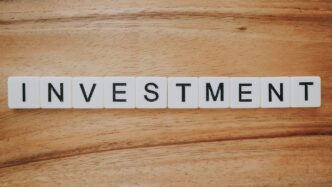The world of private equity is changing, and 2026 looks like a big year for these shifts. Think higher interest rates sticking around, investors wanting way more details, and new tech popping up everywhere. For any private equity startups out there, or even established players, figuring out these new trends is key to staying ahead. It’s not just about having money to invest anymore; it’s about being smart, transparent, and adaptable. This guide breaks down what’s coming so you can get ready.
Key Takeaways
- Markets are shifting: Expect interest rates to stay higher for longer, and investors (LPs) are demanding more openness and proof of good environmental, social, and governance (ESG) practices from private equity startups.
- Fund structures are getting creative: New options like continuation funds and evergreen models are popping up, giving investors more ways to get their money out and allowing fund managers to keep good investments longer.
- Tech is the new deal-finder: Artificial intelligence and big data are becoming standard tools for spotting investment opportunities, especially in hot areas like AI, climate tech, and healthcare.
- ESG isn’t optional anymore: It’s moved from a nice-to-have to a must-have, influencing investment choices and how companies are valued, with a big focus on climate and impact.
- Strategies are blending: The lines between private equity, venture capital, and private credit are getting blurry, meaning firms need to be flexible and understand a wider range of investment approaches.
Navigating the Evolving Private Equity Landscape
Okay, so 2026 is looking like a pretty different scene for private equity than we’ve seen in a while. Things are shifting, and it’s not just a little nudge. We’re talking about some big structural changes that fund managers and investors alike need to pay attention to. The days of just throwing money at deals and expecting a quick win are pretty much over.
The Structural Shift in Private Markets
The whole private market is expanding, that’s for sure. But with that growth comes new expectations. Investors, or LPs as they’re called, aren’t just looking at the big return numbers anymore. They want to see more.
- More transparency: LPs want to know exactly what’s going on with their money, in real-time if possible. Forget waiting for a quarterly report; they’re asking for dashboards and live updates.
- ESG matters: Environmental, Social, and Governance factors are no longer just a nice-to-have. They’re becoming a standard part of the evaluation process. Funds that don’t have a solid ESG framework are going to find it harder to raise capital.
- Operational value: Simply finding a company and buying it isn’t enough. GPs need to show they can actively improve the companies they own, making them more resilient and valuable.
Adapting to Higher-For-Longer Interest Rates
Remember when interest rates were super low? Yeah, those days are mostly behind us for now. We’re in a "higher-for-longer" interest rate environment, and this changes the game.
- Costlier debt: Borrowing money to fund deals is more expensive. This means firms have to be smarter about how they use leverage and focus more on the company’s own ability to generate cash.
- Valuation impacts: Higher rates can make future earnings less valuable today, which can put pressure on company valuations. This means deal-making might require more careful negotiation.
- Focus on cash flow: With debt being pricier, companies that can consistently generate strong cash flow become even more attractive. It’s all about sustainable performance, not just growth at any cost.
Increased LP Demands for Transparency and ESG
This ties back to the structural shift, but it’s worth highlighting separately because it’s such a big deal. LPs are getting more sophisticated and, frankly, more demanding. They’re not just passive investors anymore; they’re active partners who want to understand the details.
- Data is king: LPs are asking for detailed data on portfolio performance, how capital is being deployed, and the specific impact of ESG initiatives. Firms need robust systems to provide this.
- Beyond compliance: ESG isn’t just about ticking boxes to meet regulations. LPs want to see genuine integration of ESG principles into the investment strategy and how it contributes to long-term value.
- Reporting evolution: The standard annual report just doesn’t cut it anymore. LPs are looking for more frequent, detailed, and often digital reporting that gives them a clear picture of what’s happening.
Innovations in Fund Structures and Capital Raising
Raising money in private equity is getting more complicated, and frankly, a bit more interesting. LPs, you know, the investors, they’re not just handing over cash like they used to. They want options, and they want them to make sense for their own portfolios. It’s a big shift from the old days.
The Rise of Continuation and Secondary Funds
So, exits are a bit tricky right now. Markets are unpredictable, and sometimes selling a great company isn’t the best move. That’s where continuation funds come in. Think of it as a way for the fund manager (the GP) to keep a winning company for a bit longer, giving existing investors a chance to cash out some of their stake while still holding onto potential future gains. It’s a smart way to manage assets when the timing for a full exit isn’t quite right. The secondary market is also getting more mature, which gives LPs more ways to adjust their investments and manage risk. It’s not just about buying new funds anymore.
Evergreen and Open-Ended Fund Models
Traditional private equity funds have a set lifespan, usually around 7 to 10 years. But what if you want to invest for longer, or need more flexibility with when you get your money back? That’s where evergreen or open-ended funds are gaining ground. These structures allow for ongoing commitments and more flexible exits. For GPs, it means they can manage portfolios over the long haul without the constant pressure of a ticking clock. For LPs, it can mean smoother capital calls and distributions, which is a nice change of pace.
Co-Investment Opportunities for LPs
Institutional investors are increasingly asking for a piece of the action, directly alongside the GPs. Co-investments let LPs get more exposure to specific deals, often with lower fees and a bit more say in how things are done. For GPs, it’s a win-win: they build stronger relationships with their investors and can tackle bigger deals without taking on too much risk themselves. It’s a way to share the load and the potential rewards. These new ways of structuring funds and raising capital are really about meeting the needs of a more diverse and sophisticated investor base. It’s all about flexibility and tailored options, which is a big change from the traditional blind-pool commitments. This shift has big implications: GPs need to adapt fundraising strategies to accommodate smaller, more flexible investors who demand personalized communication and closer involvement. For the private equity investor, the message is clear: agility, transparency, and innovation are no longer optional; they are survival traits in 2026 and beyond. Private equity is poised for growth in 2026 by leveraging technology, credit, and diversification. These strategies are key to reshaping the industry and capitalizing on emerging opportunities private market trends.
Technology-Driven Deal Sourcing and Deployment
Forget the old days of relying solely on who you know. In 2026, finding the right deals is a whole different ballgame, and technology is leading the charge. It’s not just about efficiency anymore; it’s about getting ahead of the curve and spotting opportunities before anyone else even knows they exist.
AI-Powered Deal Identification
Artificial intelligence is becoming a go-to tool for finding potential investments. Think of it as a super-powered scanner that sifts through mountains of data – job postings, patent applications, even what people are saying online – to spot early signals of promising companies. This allows investment firms to approach businesses when they’re still relatively unknown, giving them a significant advantage. It’s a blend of smart algorithms and human insight, helping to pinpoint companies that have the traits of a future success story.
Leveraging Big Data for Competitive Edge
Beyond just finding deals, big data platforms are helping firms get a clearer picture of the market. By analyzing trends in hiring, supply chains, and even social sentiment, investors can get a much earlier read on where growth might be happening. This kind of insight helps in making smarter decisions faster. It’s about using all the available information to understand potential investments more deeply and reduce the time it takes to figure out if a deal is worth pursuing.
Sector Specialization in AI, Climate Tech, and Healthcare
We’re seeing a definite shift away from generalist funds. In 2026, many firms are focusing on specific areas like AI infrastructure, climate technology, and advancements in healthcare. This specialization allows them to build up really deep knowledge and connections within these sectors. It means they can develop better strategies for helping companies grow and can more accurately value potential investments. Plus, it helps them stand out to investors who are looking for unique opportunities in their portfolios.
The Growing Importance of ESG and Impact Investing

Okay, so ESG – that’s Environmental, Social, and Governance – isn’t just some buzzword anymore. By 2026, it’s pretty much a standard part of how private equity firms operate. It’s not just about looking good; it’s about making sure your investments actually perform well and hold their value, especially when it’s time to sell.
ESG Integration Beyond Compliance
Remember when ESG was just something you had to tick a box for on a report? Yeah, those days are mostly over. Limited Partners (LPs), the folks who give money to the funds, are really pushing for this. They want to see that ESG isn’t just an afterthought. It needs to be baked into the whole process, right from when you’re looking at a potential deal. That means checking out the environmental risks and social impacts before you invest, setting clear goals for sustainability during the time you own the company, and actually tracking if you’re hitting those targets. It’s about making sure the company you bought is better for it, not just financially, but in other ways too.
Climate and Impact-Focused Investment Strategies
Climate change is a big one, obviously. We’re seeing a lot more money flowing into funds that specifically focus on things like renewable energy, cleaner transportation, and infrastructure that’s built with sustainability in mind. It’s not just about doing good for the planet; investors see real returns in these areas. Growth equity funds, in particular, are stepping in to help innovative startups in this space grow and become ready for bigger investments. This is changing how deals happen – climate-related investments are getting a lot of attention, with competitive bidding and partnerships forming across borders.
Measuring and Reporting ESG Outcomes
This is where things get a bit more technical. LPs aren’t just taking your word for it anymore. They want to see actual numbers. Think about tracking how much carbon a company is reducing, the diversity of its workforce, or how its leadership is structured. These aren’t just fluffy metrics; they need to be measurable and, ideally, auditable. The idea is that if you can show real, positive ESG results, it can actually boost the company’s value when you decide to sell it. It’s about proving that your ESG efforts translate into tangible results, not just good intentions.
Convergence of Investment Strategies
It feels like the lines between different types of investing are just getting blurrier these days, doesn’t it? What used to be pretty distinct categories, like private equity and venture capital, are starting to look a lot more alike. This isn’t just a small shift; it’s a pretty big change in how money is being managed and where it’s going. Companies are staying private longer, which is a major reason for this convergence.
Blurring Lines Between Private Equity and Venture Capital
Remember when venture capital was all about super early-stage, high-risk startups, and private equity was for more established companies needing a big overhaul? Well, that’s not quite the whole story anymore. We’re seeing more venture capital firms getting involved in later-stage companies, and private equity shops are increasingly looking at growth-stage businesses. This overlap happens because companies are finding it more beneficial to stay private for longer periods. They can get the funding they need for expansion without the pressures of being a public company. This trend is really changing the game for both investors and the companies themselves. It’s also leading to more hybrid investment products that give investors exposure to both public and private markets, helping to smooth out returns over time. The whole investment management industry is seeing these shifts, with things like ETFs and private capital repositioning investment management industry.
Growth Equity as a Strategic Bridge
Growth equity is really stepping up as that middle ground. It’s not quite the wild west of early-stage VC, but it’s also not the heavy operational lift of traditional buyouts. Companies that are past the startup phase but not quite ready for an IPO are finding growth equity a good fit. It gives them the capital to scale up, develop new products, or enter new markets. For investors, it offers a way to back growing companies with a bit more predictability than pure venture capital. It’s a sweet spot that’s attracting a lot of attention from limited partners (LPs) who want to participate in innovation but with a more defined risk profile. This strategy is becoming a go-to for companies looking to expand without the immediate demands of the public markets.
The Expanding Role of Private Credit
And then there’s private credit. This area has really taken off, offering an alternative to traditional loans and bonds. With interest rates staying higher for longer, private credit funds are providing attractive yields. They’re getting involved in all sorts of deals, from direct lending to more complex situations. Pension funds and endowments, for example, are putting more money into private credit to spread their risk around. It’s becoming a significant part of many portfolios because it can offer decent returns and a different kind of diversification. The flexibility in lending strategies means investors can find something that matches their specific risk and return goals. This asset class is definitely one to watch as it continues to grow and become more mainstream.
Enhancing Portfolio Monitoring and Value Creation
Okay, so you’ve made the investment, the deal is done. Now what? This is where the real work starts, and frankly, it’s gotten way more involved than just checking the bank balance. In 2026, keeping tabs on your investments and actually making them better is a whole different ballgame.
Real-Time Performance Tracking with Data Ecosystems
Forget waiting for quarterly reports. The name of the game now is having eyes on everything, all the time. Think of it like having a live feed from all your companies, not just the financial numbers, but how they’re actually operating. This means connecting all sorts of systems – the ones that handle sales, employees, even how they manage their inventory – directly into one place. It’s about building a digital web where data flows freely, giving you a clear picture of what’s happening, right now. This lets you spot issues early, like a dip in customer satisfaction or a supplier problem, before they turn into big headaches. This constant stream of information is key to making smart, quick decisions.
AI for Anomaly Detection and Risk Management
Manually sifting through all that data? No thanks. That’s where artificial intelligence comes in. AI can look at the numbers and spot things that just don’t look right – maybe a sudden jump in expenses that doesn’t make sense, or a drop in how often customers come back. It’s like having a super-powered assistant who never sleeps, constantly watching for red flags. This isn’t just about finding problems; it’s about managing risks before they even become problems. For example, AI can help predict if a company might struggle to pay its debts or if a key employee is likely to leave. It makes managing a whole bunch of companies feel a lot less like guesswork.
Operational Excellence for Sustainable Value
Making money isn’t just about buying low and selling high anymore. It’s about actively improving the companies you own. This means getting hands-on. Think about bringing in experts to streamline how a company makes its products, or helping them find better suppliers, or even just making sure they have the right people in the right jobs. These aren’t just small tweaks; they directly impact how well a company does. When you focus on making the actual business run better, you build real, lasting value. And guess what? Your investors (the LPs) are noticing. They want to see that you’re not just shuffling money around, but that you’re actively making these businesses stronger, which, of course, leads to a better payday when it’s time to sell.
Regulatory Developments and Investor Relations
It feels like every time you turn around these days, there’s a new rule or a new form to fill out, right? The private equity world is no different. With the market getting bigger and bigger, regulators are paying closer attention. They want to make sure everything is on the up and up, especially when it comes to protecting investors and keeping the whole system stable. This means general partners (GPs) have to be really on top of their disclosures. We’re talking detailed reports on fees, how profits are split, any potential conflicts of interest, and, of course, how they’re handling ESG stuff. LPs (that’s the limited partners, the folks actually putting up the money) are pushing for standardized reports, and frankly, the old ways of just sending a quarterly summary aren’t cutting it anymore. New reporting standards are rolling out, and they’re designed to give LPs and regulators a clearer picture of where the money is going, like how it’s split between buyouts, private credit, or growth equity. If your reporting isn’t up to par, it could make fundraising a lot harder.
Heightened Regulatory Scrutiny and Disclosure Requirements
This increased oversight isn’t just a suggestion; it’s becoming a core part of how funds operate. Think about it: regulators are looking for more transparency on everything from underwriting standards to how portfolios are concentrated. They want to see that firms aren’t taking on excessive risk, especially if the economy hits a rough patch. This means GPs need solid systems in place to track borrower performance and make sure all the agreements are being followed, and they need to do it in real-time. It’s not just about avoiding trouble; it’s about building trust. When you’re dealing with international deals, it gets even trickier. Different countries have their own rules about data privacy (like GDPR in Europe) and foreign ownership. Successful firms are building compliance right into their day-to-day operations, hiring legal experts and using technology to keep cross-border deals moving without getting bogged down.
Adapting to Evolving LP Expectations
Limited partners aren’t just passive investors anymore. They’re more diverse than ever, from huge pension funds to smaller family offices, and they all have specific ideas about what they want. One big thing is transparency. LPs want to see data as it happens, not just get a report months later. Many are asking for dashboards that show portfolio performance, how ESG goals are progressing, and where the capital is being invested. This means GPs need to invest in reporting tools that can provide this level of detail. Family offices, in particular, are becoming major players. They can make decisions quickly and are often interested in co-investments or direct deals, bypassing some of the traditional fund structures. It’s a shift that requires GPs to be more flexible and responsive to what their investors are looking for.
The Democratization of Private Markets
It’s interesting to see how private markets are opening up. While institutional investors are still the main players, there’s a growing trend towards making these investments more accessible to a wider range of investors. This could mean new fund structures or platforms that allow smaller investors to participate. This trend is changing who gets a seat at the table and how deals are structured. As more investors enter the space, the demand for clear, standardized information will only grow, pushing firms to refine their communication and reporting strategies even further. It’s a complex dance between regulation, investor demands, and the practicalities of running a fund, but getting it right is key to staying competitive in 2026.
Looking Ahead: Staying Agile in 2026 and Beyond
So, as we wrap up our look at 2026, it’s pretty clear things are changing fast in the private equity world. The old ways of doing things just aren’t going to cut it anymore. With interest rates staying put and investors wanting way more than just a good return number, firms really need to be on their toes. Think flexible fund setups, smart use of tech like AI to find deals, and actually showing how you’re making a positive impact, not just talking about it. It’s not just about having the cash; it’s about being smart, open, and ready to adapt. The firms that get this and run with it are the ones that will be leading the pack, not just surviving, in the years to come.
Frequently Asked Questions
What are the main changes happening in private equity for 2026?
By 2026, private equity is changing a lot. Think of it like this: interest rates are staying higher for longer, which makes borrowing money more expensive. Also, investors (called LPs) want to know much more about what the funds are doing, especially with the environment and social stuff (ESG). Funds are also using new tricks like continuation funds to keep good investments longer and evergreen funds that don’t have a set end date.
How are funds finding new companies to invest in?
Instead of just relying on who they know, funds are using smart computer programs, like AI, to find promising companies early. They’re also looking closely at lots of data to get an edge. Some funds are becoming experts in specific areas like climate tech, AI, or healthcare to find the best deals.
Why is ESG suddenly so important?
ESG stands for Environmental, Social, and Governance. It used to be just a nice-to-have, but now it’s a must-have. Investors want to see that companies are good for the planet, fair to people, and well-run. Funds that focus on this, and can show real results, are more likely to get money and sell their investments for a good price.
Are private equity and venture capital still different?
The lines are getting blurry! Private equity, which usually buys bigger, established companies, is starting to invest in younger, faster-growing companies, kind of like venture capital. And venture capital is sometimes investing in later-stage companies. It’s like they’re meeting in the middle, with ‘growth equity’ being a popular spot for this.
How are funds keeping track of their investments?
Funds are using technology to keep a close eye on all the companies they’ve invested in. They use data systems that give them real-time updates on how things are going. AI also helps them spot problems early, like if a company is spending too much money unexpectedly, so they can fix it before it becomes a big issue.
Are regular people able to invest in private equity now?
Yes, it’s becoming easier for more people to invest in private markets. Special types of funds and investment products are opening the door for smaller investors who couldn’t get in before. This means funds need to be more open and clear about what they’re doing.














